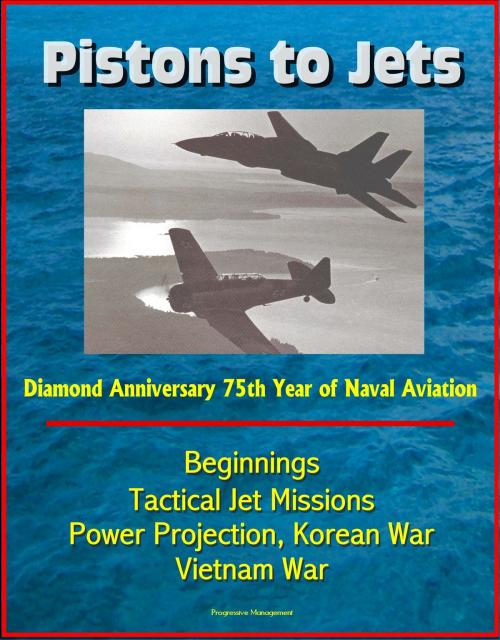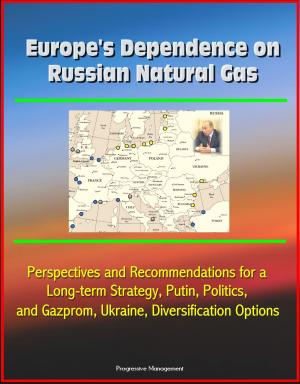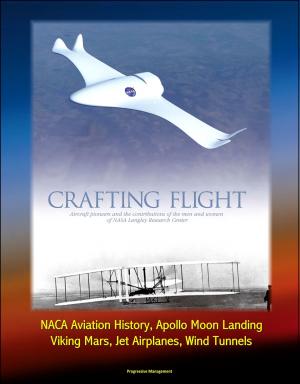Pistons to Jets: Diamond Anniversary 75th Year of Naval Aviation, Beginnings, Tactical Jet Missions, Power Projection, Korean War, Vietnam War
Nonfiction, History, Military, Aviation| Author: | Progressive Management | ISBN: | 9781301532018 |
| Publisher: | Progressive Management | Publication: | February 1, 2013 |
| Imprint: | Smashwords Edition | Language: | English |
| Author: | Progressive Management |
| ISBN: | 9781301532018 |
| Publisher: | Progressive Management |
| Publication: | February 1, 2013 |
| Imprint: | Smashwords Edition |
| Language: | English |
Engines are the hearts of airplanes. Before the age of powered flight, variations of balloons and gliders challenged the sky and scored some victories. With the introduction of power plants, aircraft became more obedient to the human beings who manipulated those engines than to the meteorological whims of the wind. "Changes in hearts" — improvements, for the most part — enabled flying machines to go much faster, from 30 or so miles per hour to supersonic levels, in the span of a human lifetime. Unlike mortal hearts, all of which bear the same design, aircraft power plants appeared in a vast assortment of shapes with varying capabilities through the years. Some failed to match expectations. Others exceeded them. Many performed yeoman service as advertised. All contributed to the continuously rising chart line of new technology. Common to the success of any engine, though, is the maintenance effort required to ensure that it functions properly. There isn't a Naval Aviator on the planet who doesn't owe a debt of gratitude to the mechanics. The folks with wrench in hand and a formidable combination of determination and knowledge have kept and continue to keep the motors purring in peace and war. This monograph is dedicated to them. Some call it the most exciting sound of all — the roaring rush of burning wind from a jet engine. Up close it can crackle the eardrums. From a distance it still conveys power and might, like a sustained prelude to a thunderclap. The sound is dynamic, a living monument to man's continuing quest for new technological horizons. It was not a common sound in U.S. Naval Aviation during WW II, but minds were laboring in various camps that would soon make it so. In 1940, an Italian named Campini remained aloft for 10 minutes in a jet-propelled aircraft. In 1941, Great Britain plunged into development of jet planes. Toward war's end, Germany's twin-turbine ME-262 fighter was effective against Allied Forces. In fact, German expertise was to play a pivotal role in the development of jet aircraft after the conflict. Though there were growing pains, the advent of turbine power paved the way for unprecedented performance in the aviation world.
Some of the subjects covered: A-1 Skyraider; FM-2 Wildcat; Grumman F8F Bearcat; VU-1; JD-1; Grampaw Pettibone; Ryan XFR-4 Fireball; Skyshark; Chance Vought Cutlass; F9F Panther; A3D Skywarrior; Tactical Jet Missions; John Glenn; Transcontinental Speed Record; McDonnell F-4H1 Phantom; Korean War; Vietnam War; A-4 Skyhawk; Grenada; Lebanon.
Engines are the hearts of airplanes. Before the age of powered flight, variations of balloons and gliders challenged the sky and scored some victories. With the introduction of power plants, aircraft became more obedient to the human beings who manipulated those engines than to the meteorological whims of the wind. "Changes in hearts" — improvements, for the most part — enabled flying machines to go much faster, from 30 or so miles per hour to supersonic levels, in the span of a human lifetime. Unlike mortal hearts, all of which bear the same design, aircraft power plants appeared in a vast assortment of shapes with varying capabilities through the years. Some failed to match expectations. Others exceeded them. Many performed yeoman service as advertised. All contributed to the continuously rising chart line of new technology. Common to the success of any engine, though, is the maintenance effort required to ensure that it functions properly. There isn't a Naval Aviator on the planet who doesn't owe a debt of gratitude to the mechanics. The folks with wrench in hand and a formidable combination of determination and knowledge have kept and continue to keep the motors purring in peace and war. This monograph is dedicated to them. Some call it the most exciting sound of all — the roaring rush of burning wind from a jet engine. Up close it can crackle the eardrums. From a distance it still conveys power and might, like a sustained prelude to a thunderclap. The sound is dynamic, a living monument to man's continuing quest for new technological horizons. It was not a common sound in U.S. Naval Aviation during WW II, but minds were laboring in various camps that would soon make it so. In 1940, an Italian named Campini remained aloft for 10 minutes in a jet-propelled aircraft. In 1941, Great Britain plunged into development of jet planes. Toward war's end, Germany's twin-turbine ME-262 fighter was effective against Allied Forces. In fact, German expertise was to play a pivotal role in the development of jet aircraft after the conflict. Though there were growing pains, the advent of turbine power paved the way for unprecedented performance in the aviation world.
Some of the subjects covered: A-1 Skyraider; FM-2 Wildcat; Grumman F8F Bearcat; VU-1; JD-1; Grampaw Pettibone; Ryan XFR-4 Fireball; Skyshark; Chance Vought Cutlass; F9F Panther; A3D Skywarrior; Tactical Jet Missions; John Glenn; Transcontinental Speed Record; McDonnell F-4H1 Phantom; Korean War; Vietnam War; A-4 Skyhawk; Grenada; Lebanon.















